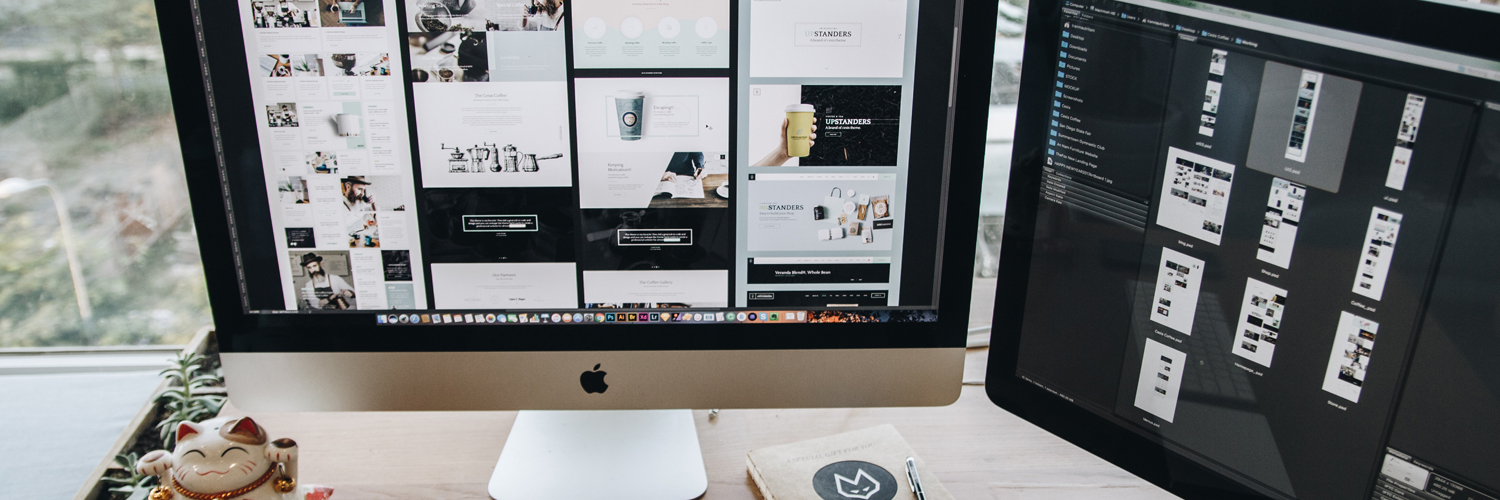Aesthetics and Usability
Aesthetics and usability are important for a website’s success. It is therefore vital to understand under what conditions websites evoke positive first impressions and whether and how these conditions predict usage and user experience related to websites. Experimental research has so far shown that aesthetically pleasing websites may not always lead to a higher subjective rating of usability, and it has been debated whether a positive first impression is enough for retaining the user on the webpage. In current empirical projects, we have therefore investigated determining factors of perceived aesthetics and the consequences of aesthetically pleasing web designs for perceived usability and user behavior. While previous studies have often focused on short-time exposure to website stimuli, more current studies of our lab investigate the effect of visual appeal on user behavior and evaluation after more realistic and prolonged exposure to websites. To further extend previous insights, the impact of different objective design factors, device (mobile versus desktop), and usage mode (goal versus action mode) on subjective aesthetics, usability and actual user behavior has been investigated.
Summary of empirical findings:
- Aesthetics implemented in web design does not affect usability, but usability influences post-use aesthetic perception (Tuch et al., 2012).
- Websites with low complexity and high prototypicality are perceived as visually highly appealing, whereas the effects are stronger in earlier stages of information-processing (Tuch & Bargas-Avila, 2011).
- Websites evaluated as most aesthetically appealing have high symmetry, low complexity, blue hue, medium brightness, and medium and high saturation. Furthermore, complexity was the only factor to impact all facets of the subjective aesthetic perception. (Seckler et al., 2015)
- On the effect of first impression and usage mode on actual user behavior: Positive first impression (i.e. more appealing websites) had a positive impact on users willingness to view and intention to stay on the shortly presented website. However, in the more realistic scenario visual appeal had no impact on the time users stayed on the website, but usage mode played a significant role for whether users stayed longer on the website (Iten et al., 2018).
Master Theses:
- Quintana, Laura (2017). The Pretty and the Useful: Effects of Aesthetics and Usability on Mobile Webshop Evaluation.
- Jenny, Mathias (2016). Aesthetics and Performance: Are Users More Efficient with Beautiful Websites?
- Troendle, Antonin (2017). First impression: The importance of aesthetics for a website’s success.
- Masterproject: possible
- Contact: E-Mail
Publications
Conference Proceedings
2011
- Tuch, A. N., & Bargas-Avila, J. A. (2011). The role of visual complexity and prototypicality regarding first impression of websites: Working towards understanding aesthetic judgments.
Journal Articles
2018
- Iten, G., H, Troendle, A., & Opwis, K. (2018). Aesthetics in Context—The Role of Aesthetics and Usage Mode for a Website’s Success. Interacting with Computers. https://doi.org/https://doi.org/10.1093/iwc/iwy002
2015
- Seckler, M., Opwis, K., & Tuch, A. N. (2015). Linking objective design factors with subjective aesthetics: An experimental study on how structure and color of websites affect the facets of users’ visual aesthetic perception. Computers in Human Behavior, 49, 375–389. https://doi.org/10.1016/j.chb.2015.02.056
2012
- Tuch, A. N., Roth, S. P., Hornbaek, K., Opwis, K., & Bargas-Avila, J. A. (2012). Is beautiful really usable? Toward understanding the relation between usability, aesthetics, and affect in HCI. Computers in Human Behavior, 28(5), 1596–1607. https://doi.org/10.1016/j.chb.2012.03.024

